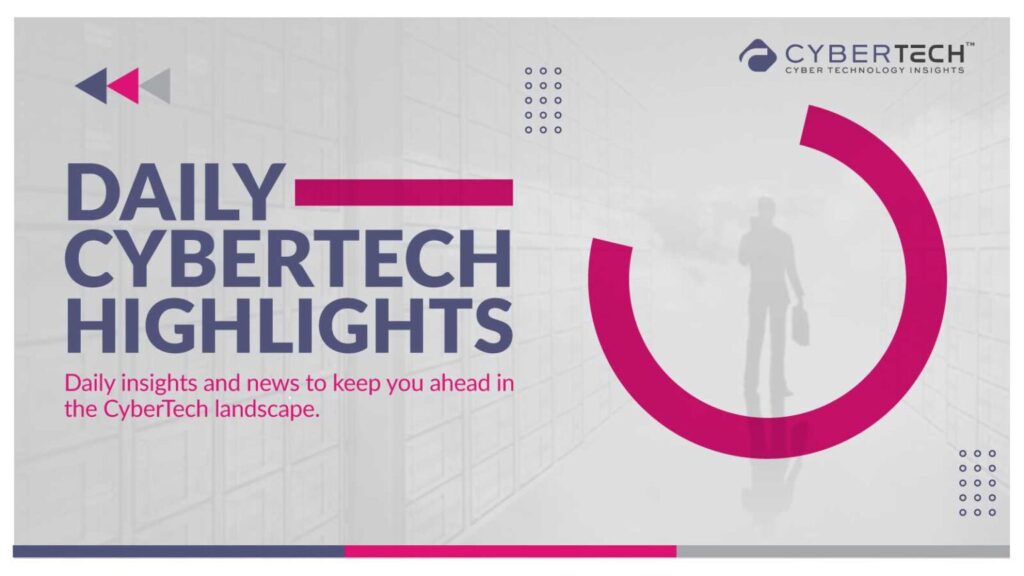The average global data breach costs have reached $4.88 million in 2024. This is a 10% increase compared to last year’s losses. Astonishingly, AI and automation can save organizations from incurring close to half of these data breach costs, says IBM in its latest report. However, the actual financial impact of data breaches far exceeds the highlighted statistics. Cyber teams, headed by CISOs are risking more than just financial health to track and safeguard their existing data and infrastructure. They risk exposing their organization’s intellectual properties to newer cyber attacks. All 50 states have their own data breach notification laws to report cybersecurity and data breach incidents.
What is a data breach?
According to cybersec leader Check Point, “a data breach is any incident in which someone gains unauthorized access to sensitive or protected information.” Generally, a data breach is used as a synonym for cyber attack. However, not all cyberattacks are data breaches. They become one when someone gains an unauthorized access to data.
In this CyberTech Insights’ latest article, we will share the key takeaways from IBM’s latest report on the escalating data breach costs in 2024.
#1 What are cyber attackers stealing from your organization?
IT failures and human-led errors caused almost half of all data breaches.
Most data breaches hunt personally identifiable information (PII). Customer PII is the most compromised asset, accounting for a majority of data breaches, as reported by IBM in its latest report. However, employee PII exceeds the pre-record of a data breach. Other types of data that lead to compromise include:
- Intellectual property
- Corporate data
- Anonymized customer data (non-PII)
Data breaches infringe on online human rights. Attackers used stolen credentials and phishing to launch data breach attacks on the organizations. Data breaches fueled by stolen credentials impose an average financial burden of $4.81 million on organizations. This staggering figure underscores the critical need for robust identity and access management strategies. Phishing attacks led to costlier data breaches — $4.88 million per incident. However, malicious insider attacks (7%) are the trojan dark horses/vectors the CISOs and security managers lost to. At $4.99 million per attack, these attacks dented the biggest hole in the pockets.
Other common vectors that led to data breaches include:
- Cloud misconfiguration (12%, $3.98M)
- Unknown zero-day vulnerability (11%, $4.46M)
- Social engineering (6%, $4.77M)
- Known unpatched vulnerability ($4.433M)
- Accidental data loss due to stolen devices (6%, $4.28M)
- Physical security compromise (6%, $4.19M)
- System errors (6%, $4.07M)
#2 Security AI and Automation: Protection with Loss Minimization
AI in security automation can make CISOs and business leaders more responsive against data breaches.
Data breach costs in 2024 are 10x of the 2023 numbers. This is the biggest jump since the onset of the pandemic, and the trend is forecasted to move upward in the coming years. A breach organization would lose an average of $3.86 million in 2018 and 2020. Cyber attacks became fiercer in 2021, and each year since then it has been trial by fire for security teams worldwide.

Despite rising costs, cyber teams can minimize loss. The strategic use of AI and automation to manage security processes can accomplish loss minimization for CISOs.
IBM’s Cost of a Data Breach Report 2024 cites two out of three organizations deploying security AI and automation across their security operation center or SOC. AI prevention technologies implemented within an organization saved an average of $2.2 million. This is the largest cost savings mentioned in the security report.
AI in security automation against cyber threats applies to four critical operations:
- Prevention
- Threat detection
- Investigation, and
- Response
#3 Staffing Shortages: Do Cyber Teams Have Enough Resources to Thwart and Remediate
More than half of breached organizations share a common problem. They are heavily short-staffed on their security fronts.
High-level IT security shortages, vicious data breaches, and a never-ending chase to automate processes using Generative AI (GenAI) are taking a toll on cyber teams. Post-breach customer and third-party response to a data breach incident have intensified the costs. Staffing challenges make these data breaches look worse. Compared to 2023, the cyber skills shortage increased by 26.2%– when converted to monetary values, this corresponds to $1.76 million in data breach costs! Despite access to best-in-class AI security tools, cyber teams find skills gaps and staff shortages hard to manage.
Shield Your Organization: Develop Critical Cybersecurity Skills with ISC2 certifications, educational resources, and offers. Download this resource to become a cybersecurity hero in 2024.
#4 Healthcare Industry: The Biggest Loser in the Data Breach Wildfire
Healthcare, followed by financial services, industrial, and technology companies, topped the charts as the biggest data breach cost centers
Digital dependency, with poorly governed data security, is putting lives and businesses at risk. Healthcare companies earned the ignominy (yet again!) of being the costliest industry for data breaches in 2024. Despite the best security protocols, the industry remains the biggest and most popular target for cybercriminals. Healthcare companies lose an average of $10.10 million per incident, most likely due to ransomware attacks. Healthcare CISOs should embrace critical cyber maturity to win against attackers and minimize data breach costs.
What makes healthcare so attractive to cybercriminals?
The rapid digital transformation spurred by the COVID-19 pandemic has left healthcare organizations vulnerable to cyberattacks. The hasty integration of disparate digital systems has created a complex landscape ripe for exploitation. This digital infrastructure patchwork, often lacking robust security measures, has become a prime target for cybercriminals.
Cyberthreat actors target healthcare companies to break into their existing data infrastructure. These systems store sensitive data such as electronic health records (EHR), patient care management data, business credit card details, and insurance payment information. Also, holding a healthcare services company to ransom post-data breach is a low-hanging fruit. Once breached, healthcare security teams are likely to pay the ransom to restore normal operations as soon as possible. Another reason to target the healthcare industry — an uncontrolled and ungoverned use of the Internet of Medical Things (connected devices).
Recommended CyberTech Insights: New Security Threats Stemming from AI-based Code-generation Tools
Timeline and the Corresponding Data Breach Costs: Are CISOs leaving too much on the table?
Time is money, and the more time CISOs take to remediate their infrastructure, security costs escalate quickly. Data breaches with longer lifecycles exceeding 200 days cost companies $5.46 million. This year, data breach costs increased by more than 10% if they were not contained within 200 days. This doesn’t mean security teams who managed to identify and contain a data breach in less than 200 days fared well in 2024. Organizations that managed to contain data breaches within less than 200 days were exposed to 3.6% times higher data breach costs in 2024 versus 2023.
Are Security Teams and their Tools Potent Enough Against Attacks? Will the Data Breach Costs Come Down in the Future?
In-house organization security teams and tools detected the most number of data breach incidents in 2024. However, these teams fell short of expectations in preventing data breaches completely. In fact, data breaches that slipped past them cost companies more in 2024. For example, attackers disclosed breaches after causing considerable damage to raise the stakes in ransomware. Cost-wise analysis show data breach cost disclosed by an attacker group was $5.53 million versus $4.55 million for data breaches identified by the security teams and tools.
AI and Automation: Forging the Future of Cybersecurity
AI threat hunting has been in use since the late 2000s, states Palo Alto Networks. The use of AI and automation in security management can lower data breach costs. Extensive use of AI-enabled tools can save $1.88 million. The escalating costs associated with data breaches underscore the critical importance of rapid incident response. Research indicates a direct correlation between breach duration and financial impact. Bad actors have to deal with stronger than ever-before AI and automation tools to get to critical IT and data infrastructure. It might seem that the data breach costs are not going down any sooner dispute the increase in the adoption of AI and automation security tools and technologies in cybersecurity and posture management.

Data reaches contained within the 200-day threshold come with a hefty price tag.
Modern-day cybersecurity teams can contain the breach 100 days faster with AI and automation security tools than non-AI users. The rapid expansion of generative AI, while offering unprecedented opportunities, also exacerbates the problem by expanding the attack surface. This perfect storm necessitates a fundamental shift in security strategies. Businesses must invest in AI-driven defenses and cultivate a skilled workforce to stay ahead of the curve.
At the time of this announcement, Kevin Skapinetz, Vice President, Strategy and Product Design, at IBM Security said – “Businesses are caught in a continuous cycle of breaches, containment, and fallout response. This cycle now often includes investments in strengthening security defenses and passing breach expenses on to consumers – making security the new cost of doing business.”
Kevin added, “As generative AI rapidly permeates businesses, expanding the attack surface, these expenses will soon become unsustainable, compelling business to reassess security measures and response strategies. To get ahead, businesses should invest in new AI-driven defenses and develop the skills needed to address the emerging risks and opportunities presented by generative AI.”
Clearly, time is a critical adversary in the battle against cyber threats. Swift detection, containment, and remediation are essential to minimizing damage and financial loss.
More about the report on Data Breach Costs
For the nineteenth consecutive year, the Ponemon Institute, sponsored by IBM, has released its in-depth analysis of global data breach costs. The 2024 report examines data from 604 organizations worldwide, collectively representing over 6,000 breaches. This longitudinal study has solidified its position as the industry benchmark for understanding the financial and operational impact of cyberattacks.







